Content Menu
● Understanding UV Protection in Swimwear
>> How UPF Ratings Work
● The Science Behind UPF Fabrics
>> Fabric Composition
>> Weave Density
>> Color
>> Special Treatments
● Benefits of UPF Swimwear
● Top Brands Offering UPF Swimwear
● Choosing the Right UPF Swimwear
>> UPF Rating
>> Coverage
>> Fit
>> Activity Level
>> Style and Design
● Caring for Your UPF Swimwear
● The Future of UPF Swimwear
● Beyond the Beach: UPF Clothing for Everyday Use
● The Role of UPF Swimwear in Skin Cancer Prevention
● UPF Swimwear for Different Age Groups
>> Children's UPF Swimwear
>> Adult UPF Swimwear
>> Senior UPF Swimwear
● Combining UPF Swimwear with Other Sun Protection Methods
● The Environmental Impact of UPF Swimwear
● UPF Swimwear in Professional Settings
● The Psychology of Sun Protection
● Frequently Asked Questions About UPF Swimwear
>> 1. Q: Does UPF swimwear lose its effectiveness over time?
>> 2. Q: Can I still get a tan while wearing UPF swimwear?
>> 3. Q: Is UPF swimwear more expensive than regular swimwear?
>> 4. Q: Can I wear UPF swimwear in chlorinated pools?
>> 5. Q: Do I still need to wear sunscreen with UPF swimwear?
● Conclosion
● Citations:
In today's world, where the effects of climate change are becoming increasingly apparent, protecting our skin from harmful UV rays has never been more critical. As summers grow longer and hotter, traditional methods of sun protection, such as relying on a base tan or applying sunscreen, are no longer sufficient. This is where UV protection swimwear comes into play, offering a modern solution to safeguard our skin while enjoying water activities.
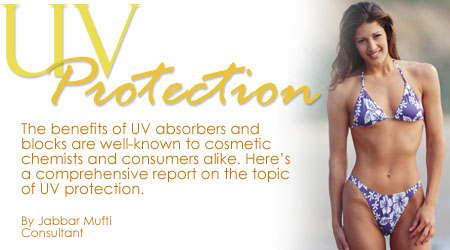
Understanding UV Protection in Swimwear
UV protection swimwear, also known as UPF (Ultraviolet Protection Factor) swimwear, is specifically designed to shield the skin from both UVA and UVB rays. Unlike regular swimwear, which may offer minimal sun protection, UPF swimwear is engineered with fabrics that have built-in UV-blocking properties.
How UPF Ratings Work
The effectiveness of UPF swimwear is measured using a rating system similar to the SPF (Sun Protection Factor) used for sunscreens. However, there's a crucial difference:
- SPF only measures protection against UVB rays
- UPF measures protection against both UVA and UVB rays
A UPF 50+ rating, which is considered excellent by The Skin Cancer Foundation, blocks 98% of the sun's UV rays, allowing only about 2% to penetrate the fabric and reach the skin.
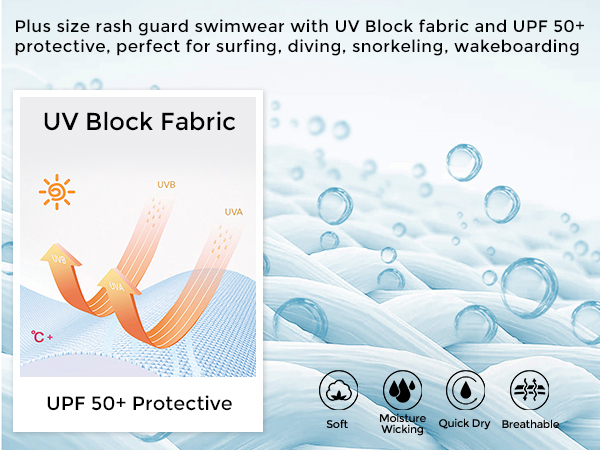
The Science Behind UPF Fabrics
UPF fabrics work through a combination of factors:
1. Fabric composition
2. Weave density
3. Color
4. Special treatments
Fabric Composition
Different materials offer varying levels of UV protection:
- Polyester: Excellent UV absorption due to its benzene ring structure
- Nylon and Silk: Good UV protection
- Cotton: Generally lower UPF, unless treated
Weave Density
Tightly woven fabrics provide better protection by minimizing the gaps through which UV rays can penetrate. This is why professional-grade sports shirts can achieve UPF ratings of 100+.
Color
Darker colors tend to absorb more UV radiation, offering better protection than lighter shades. However, this doesn't mean you're limited to black swimwear – many brands now offer a wide range of colors with high UPF ratings.
Special Treatments
Some manufacturers incorporate UV-inhibiting ingredients directly into the fabric or apply treatments that enhance UV protection.
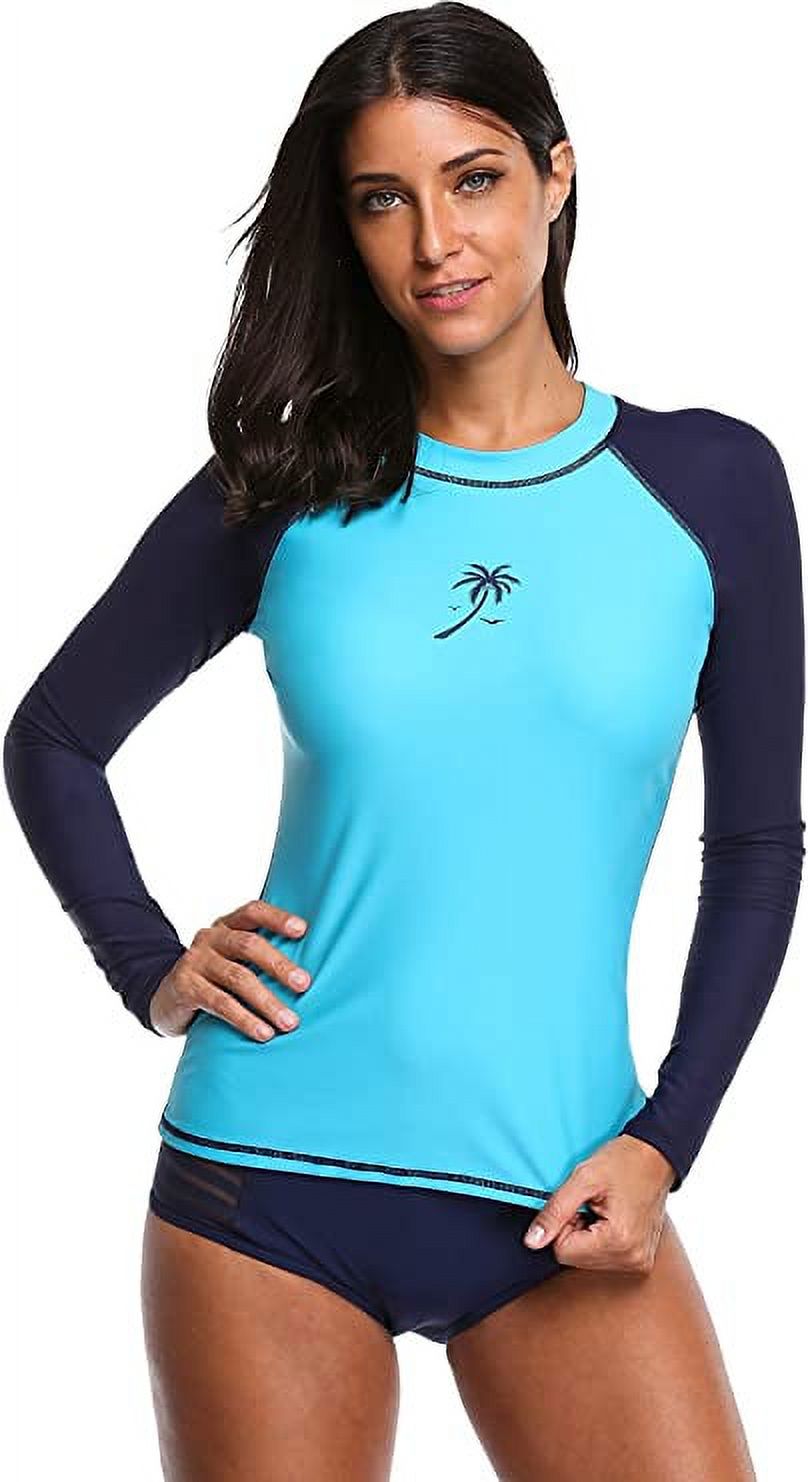
Benefits of UPF Swimwear
Investing in UPF swimwear offers numerous advantages:
1. Consistent Protection: Unlike sunscreen, which needs frequent reapplication, UPF swimwear provides constant protection as long as you're wearing it.
2. Comprehensive Coverage: UPF swimwear can cover larger areas of the body, reducing the risk of missed spots that often occur with sunscreen application.
3. Long-term Skin Health: By effectively blocking harmful UV rays, UPF swimwear helps prevent premature aging, sunburns, and reduces the risk of skin cancer.
4. Comfort and Versatility: Many UPF swimwear options are designed to be lightweight, quick-drying, and suitable for various water activities.
5. Cost-Effective: While the initial investment might be higher than regular swimwear, the long-lasting protection can save money on sunscreen in the long run.
Top Brands Offering UPF Swimwear
Several brands have made a name for themselves in the UPF swimwear market:
1. Coolibar: Known for its high UPF ratings and stylish designs
2. Lands' End: Offers a variety of sun-protective swimwear options
3. UV Skinz: Specializes in UPF 50+ swimwear for the whole family
4. EcoStinger: Provides eco-friendly options with excellent UV protection
5. Athleta: Combines fashion with function in their UPF swimwear line

Choosing the Right UPF Swimwear
When selecting UPF swimwear, consider the following factors:
UPF Rating
Opt for swimwear with a UPF rating of 50+, which offers the highest level of protection.
Coverage
Consider how much skin you want to protect. Options range from full-body suits to two-piece sets and rash guards.
Fit
Choose a comfortable fit that allows for movement without excessive stretching, as stretching can reduce the UPF rating.
Activity Level
Select swimwear appropriate for your intended activities. For example, surfers might prefer full-coverage rash guards, while casual beachgoers might opt for swim dresses or board shorts.
Style and Design
UPF swimwear comes in various styles and designs, so you don't have to compromise on fashion for protection.
Lands' End - The ultimate sun protection guide featuring UPF 50 styles
Video: Lands' End - The ultimate sun protection guide featuring UPF 50 styles
Caring for Your UPF Swimwear
To maintain the effectiveness of your UPF swimwear:
1. Wash according to the manufacturer's instructions
2. Avoid using fabric softeners, which can degrade the UV-protective properties
3. Replace swimwear if it becomes stretched, faded, or worn out
The Future of UPF Swimwear
As awareness of sun protection grows and technology advances, we can expect to see continued innovations in UPF swimwear:
- Integration of smart fabrics that change color or pattern when UV exposure is high
- Development of more sustainable and eco-friendly UPF materials
- Expansion of stylish options to cater to diverse fashion preferences
Beyond the Beach: UPF Clothing for Everyday Use
The benefits of UPF protection extend beyond swimwear. Many brands now offer UPF-rated everyday clothing, including:
- Hats and caps
- Long-sleeve shirts
- Pants and leggings
- Dresses and skirts
This expansion allows for comprehensive sun protection in various outdoor activities, from gardening to hiking.
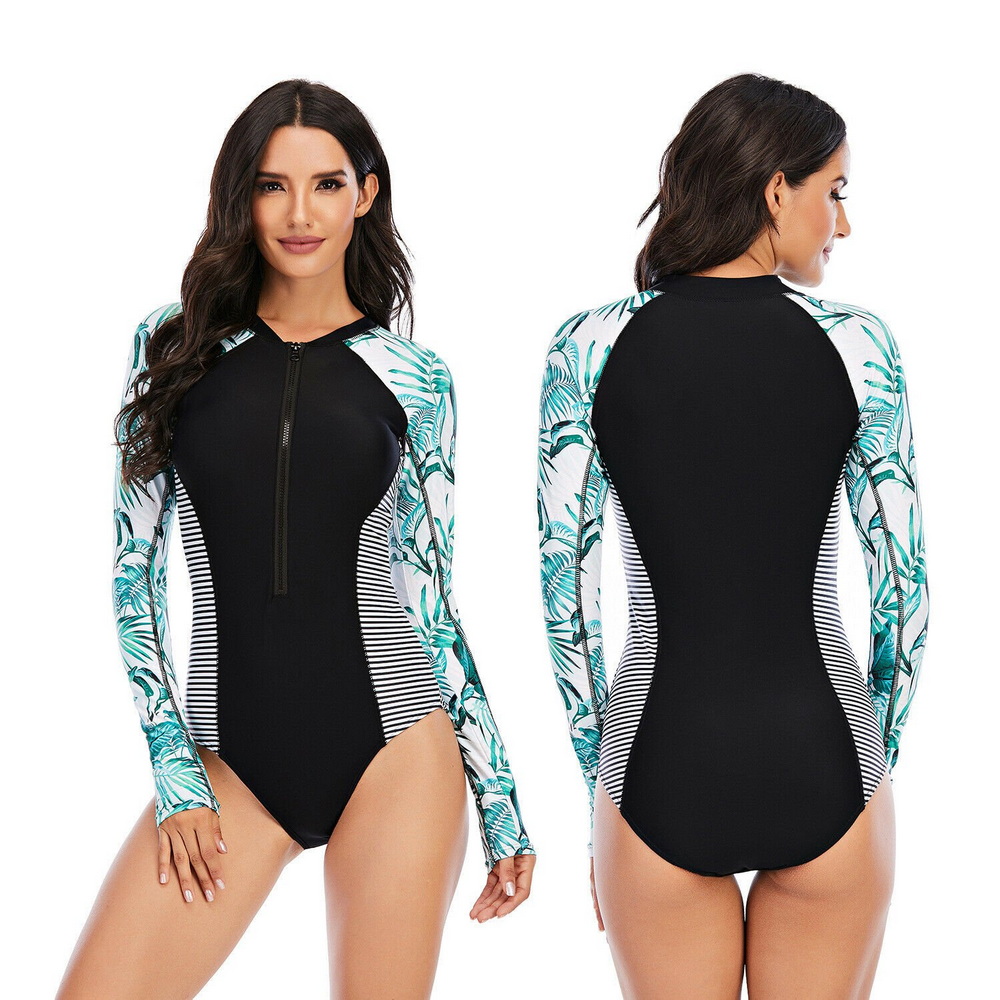
The Role of UPF Swimwear in Skin Cancer Prevention
Skin cancer is one of the most common types of cancer, with exposure to UV radiation being a primary risk factor. UPF swimwear plays a crucial role in a comprehensive sun protection strategy:
1. Reduces direct UV exposure to large areas of the body
2. Provides consistent protection without the need for reapplication
3. Complements other sun safety measures like seeking shade and wearing sunglasses
Healthcare professionals increasingly recommend UPF swimwear as part of a holistic approach to skin cancer prevention.
UPF Swimwear for Different Age Groups
Children's UPF Swimwear
Children's skin is particularly vulnerable to UV damage, making UPF swimwear essential for young ones. Many brands offer playful designs with full coverage to keep kids protected during water play.
Adult UPF Swimwear
For adults, the options are vast, ranging from fashionable bikinis and swim trunks to more conservative full-coverage suits. The key is finding a balance between style, comfort, and protection.
Senior UPF Swimwear
Seniors, who may have more sensitive skin or a higher risk of skin cancer, can benefit from UPF swimwear designed for comfort and ease of use, such as front-zip suits or adaptive designs.
Combining UPF Swimwear with Other Sun Protection Methods
While UPF swimwear provides excellent protection, it's most effective when used as part of a comprehensive sun safety strategy:
1. Apply sunscreen to exposed areas not covered by swimwear
2. Wear a wide-brimmed hat for additional face and neck protection
3. Use UV-blocking sunglasses to protect your eyes
4. Seek shade during peak UV hours (usually 10 am to 4 pm)
5. Stay hydrated to help your skin maintain its natural defenses
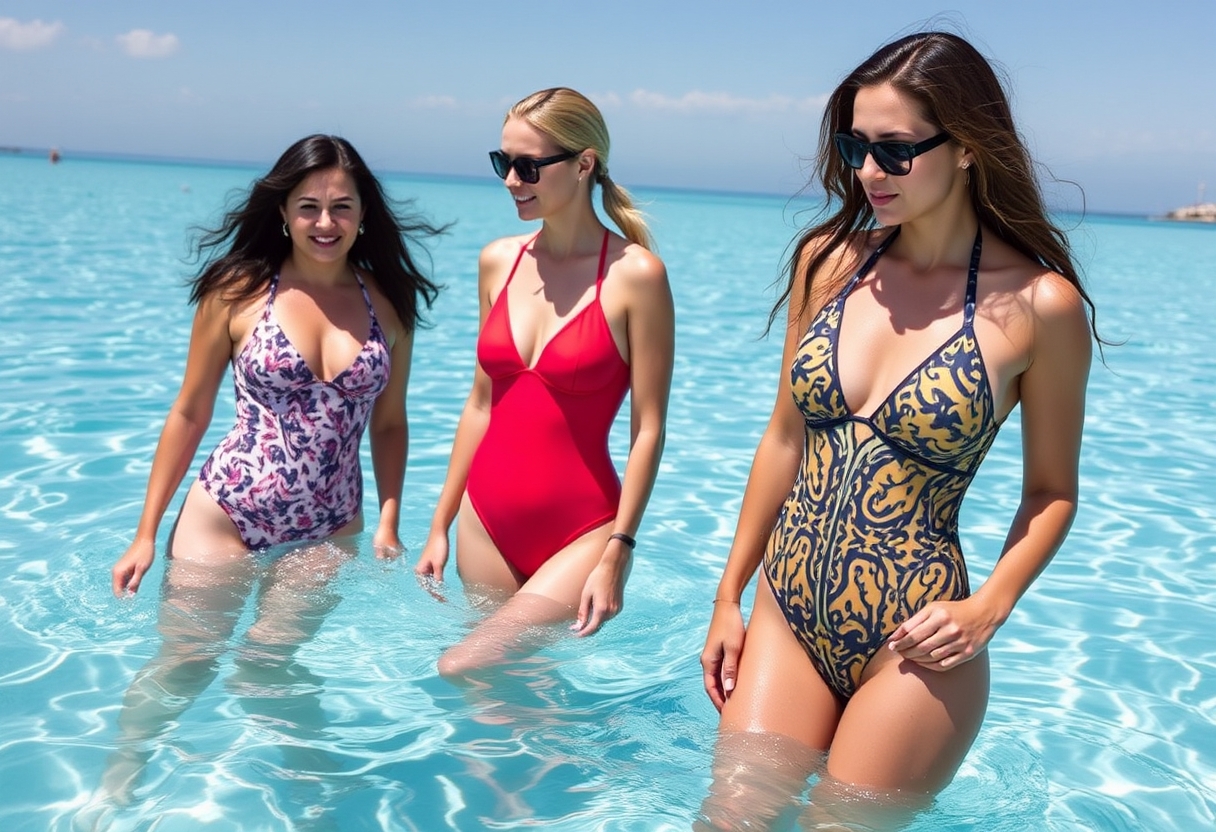
The Environmental Impact of UPF Swimwear
As consumers become more environmentally conscious, many UPF swimwear brands are focusing on sustainability:
- Using recycled materials in fabric production
- Implementing eco-friendly manufacturing processes
- Designing durable products to reduce waste
- Offering recycling programs for old swimwear
When choosing UPF swimwear, consider brands that prioritize environmental responsibility alongside sun protection.
UPF Swimwear in Professional Settings
UPF swimwear isn't just for leisure activities. Many professionals who work outdoors or near water rely on UPF clothing for protection:
- Lifeguards
- Marine biologists
- Outdoor sports instructors
- Fishing guides
For these individuals, UPF swimwear is an essential part of their work attire, providing both protection and professionalism.
The Psychology of Sun Protection
Adopting UPF swimwear can have psychological benefits beyond physical protection:
- Increased confidence in outdoor activities
- Reduced anxiety about sun exposure
- Positive role modeling for children and peers
By making sun protection a visible priority, UPF swimwear wearers contribute to a culture of skin health awareness.
Frequently Asked Questions About UPF Swimwear
1. Q: Does UPF swimwear lose its effectiveness over time?
A: Yes, UPF swimwear can lose some effectiveness as the fabric wears out or stretches. However, with proper care, it can maintain its protective properties for 1-4 years or longer.
2. Q: Can I still get a tan while wearing UPF swimwear?
A: While UPF swimwear significantly reduces UV exposure, you may still tan in uncovered areas. However, the primary goal is protection, not tanning.
3. Q: Is UPF swimwear more expensive than regular swimwear?
A: UPF swimwear can be more expensive initially, but the added protection and durability often make it a cost-effective choice in the long run.
4. Q: Can I wear UPF swimwear in chlorinated pools?
A: Yes, many UPF swimwear options are designed to withstand chlorine. However, always check the care instructions for specific guidance.
5. Q: Do I still need to wear sunscreen with UPF swimwear?
A: Yes, you should still apply sunscreen to exposed areas not covered by the swimwear for comprehensive protection.
Conclosion
In conclusion, good swimwear with UV protection is an essential tool in safeguarding our skin health while enjoying outdoor and water activities. By understanding the science behind UPF fabrics, choosing the right swimwear, and incorporating it into a comprehensive sun protection strategy, we can significantly reduce our risk of UV-related skin damage. As technology and design continue to evolve, UPF swimwear is set to become an increasingly integral part of our wardrobes, offering both style and substance in our quest for safe fun in the sun.
Citations:
[1] https://sundazesurf.com/blogs/news/the-importance-of-sun-protective-swimwear
[2] https://www.bondijoe.com/blogs/mens-swimwear-fabric-technology/the-importance-of-uv-protection-in-mens-swimwear
[3] https://www.nbcnews.com/select/shopping/best-upf-clothing-ncna1239532
[4] https://www.landsend.com/shop/womens-sun-protection-swimsuits/S-xfh-xez-y5c-xqm-xec
[5] https://www.youtube.com/watch?v=nUMRXiQWvL0
[6] https://theruggedmale.com/understanding-upf-swimwear-health-benefits/
[7] https://www.uvskinz.com/blogs/live/everything-you-need-to-know-about-upf-swimwear
[8] https://www.ecostinger.com
[9] https://www.youtube.com/watch?v=JT-NOUEI8Bc
[10] https://www.youtube.com/watch?v=uk9uaBU025I







































